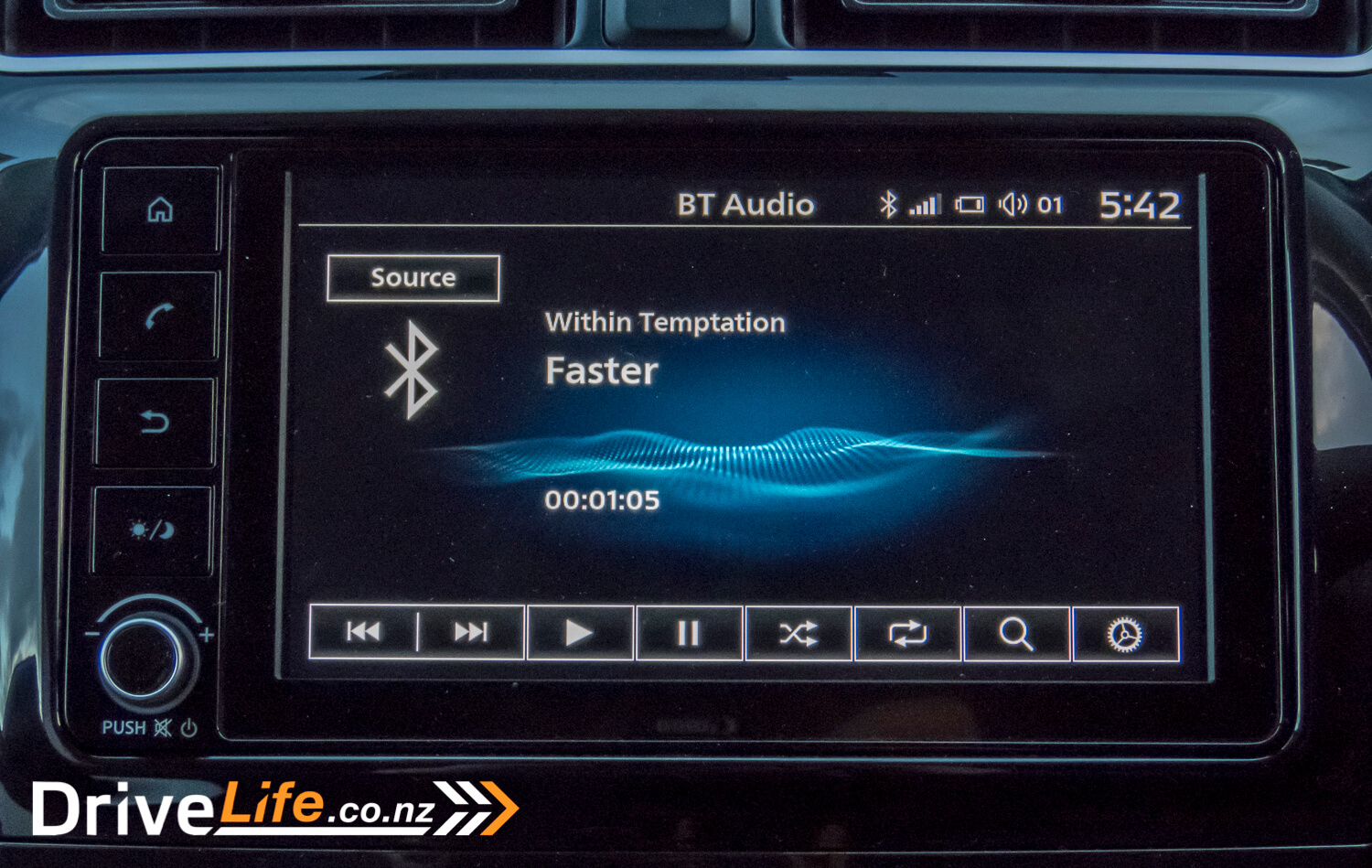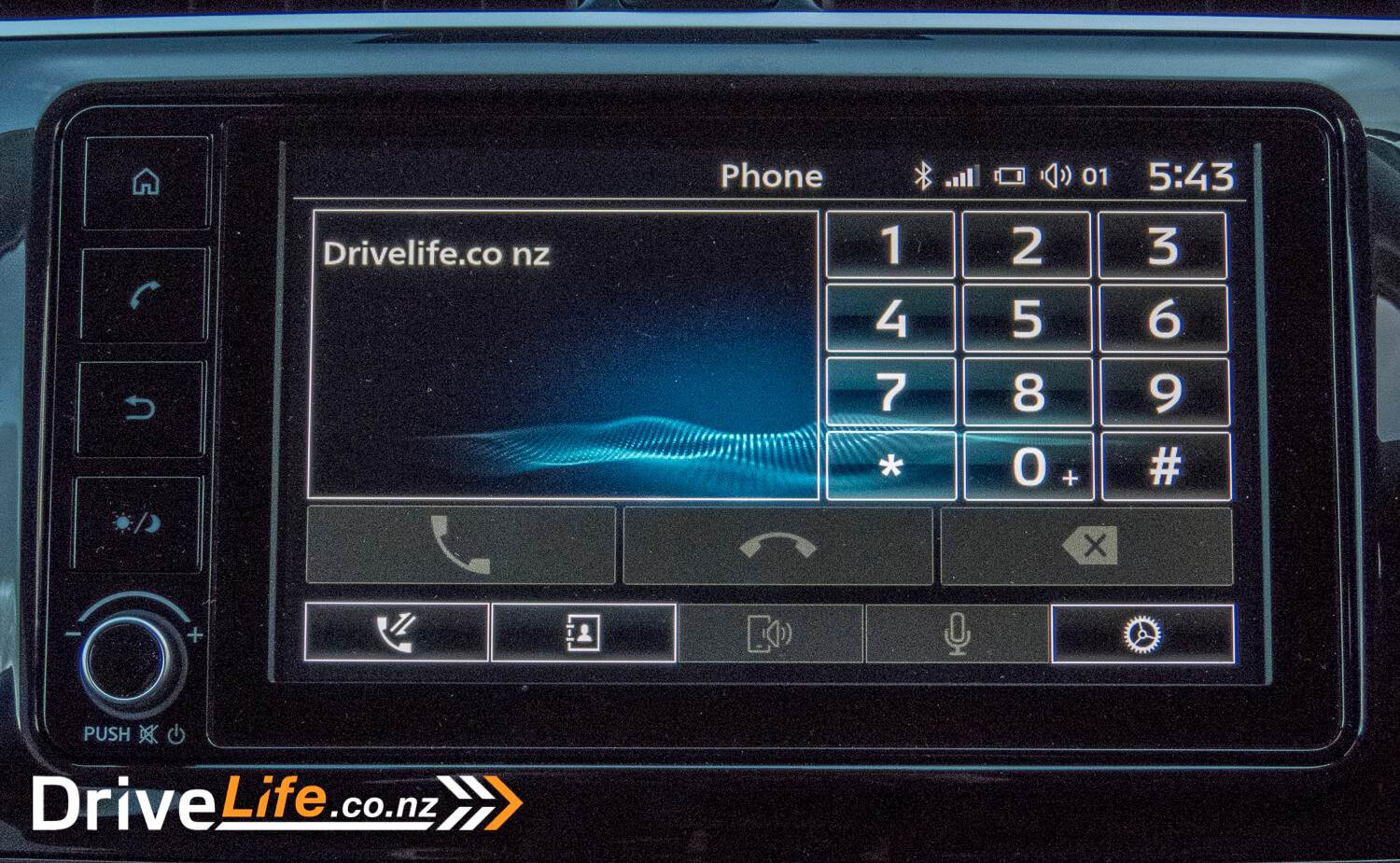The Mitsubishi Mirage has some history in New Zealand. Back in the early 1980s, Mirages were being churned out of Mitsubishi’s Porirua assembly plant, becoming one of New Zealand’s best-selling small vehicles.
Over the years, the badge was worn on many of Mitsubishi’s smaller vehicles, coming to us in the form of 3-door hatches, 4-door sedans, and even in the form of the performance-oriented Mirage Panther, built exclusively for New Zealand.
Over time, the New Zealand connection waned and the Mirage badge briefly disappeared in 2002 with the arrival of the Mitsubishi Colt. In 2012, Mitsubishi reintroduced the Mirage, worn on a Thai-built sub-compact hatch.
In 2020, the Mirage serves as Mitsubishi’s entry level sub-compact hatchback for the budget conscious buyer. Let’s determine whether this Mirage is worthy of the best-seller status.

What’s In The 2020 Mitsubishi Mirage Range?
There’s only one Mitsubishi Mirage available for the New Zealand market, this is the Mirage XLS, priced at $19,990. Overseas, Mitsubishi does produce the Mirage in different trims levels and comparatively, the XLS sits towards the top of the range.
For your $19,900, you understandably get a car which is pretty bare on the inside. As standard, the Mirage XLS comes with 15-inch alloys, 7-inch infotainment with Bluetooth, Android Auto and Apple CarPlay, 4 speaker audio, reverse camera, 2nd row ISO-FIX points, cruise control, privacy glass, daytime running lights, Active Traction Control (ATC), Forward Collision Mitigation (FCM), Lane Departure Warning (LDW) and Hill Start Assist.
The Mitsubishi Mirage has one powertrain offering. This is a 1.2-litre, 3-cylinder MIVEC petrol engine, producing 58kW of power and 102Nm of torque. The engine is paired with a CVT automatic transmission.
The Mirage is offered in 7 different colours; there’s the standard White, Silver and Black hues, plus sharper colours like Velvet Red, Neptune Blue, Sand Yellow and Garnet Purple.
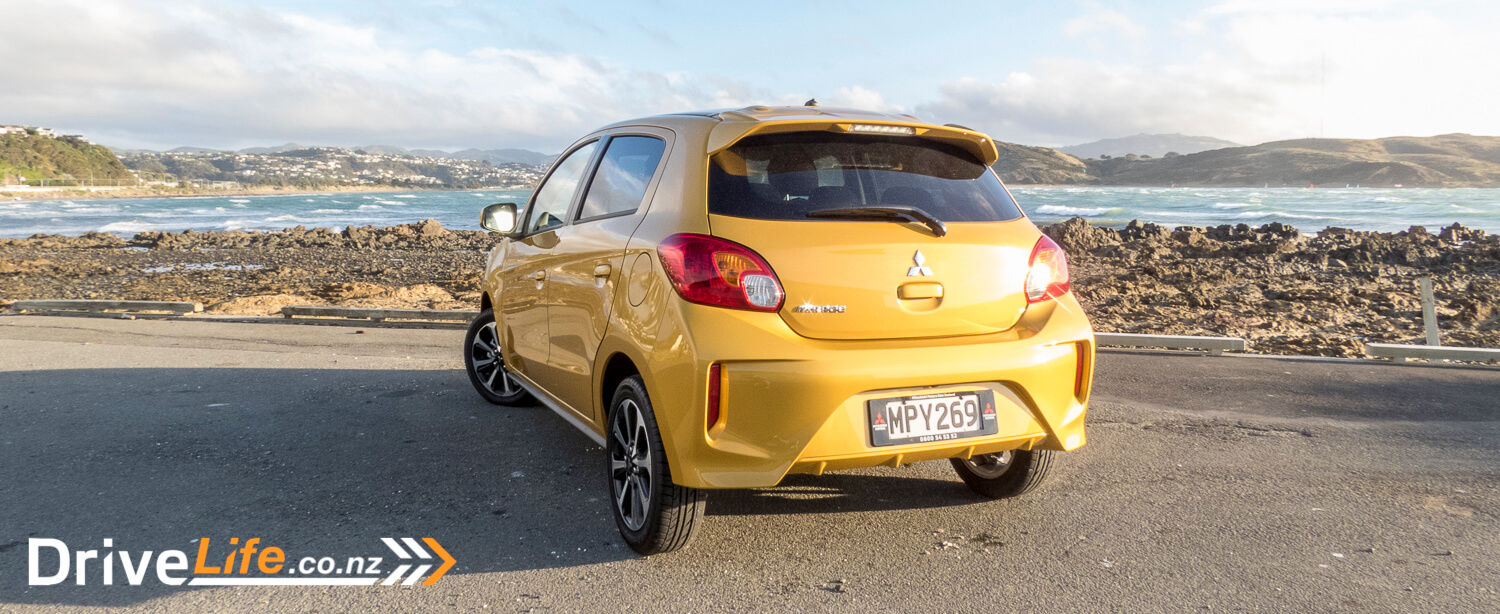
First Impressions Of The 2020 Mitsubishi Mirage XLS
Styling is undoubtedly going to be a small component on the balance sheet of any car with a budget focus. I certainly can’t think of any Supermini that ‘wows’ in the looks department.
Since the nameplate returned this decade, the design of the modern Mirage never started out as having been particularly inspired. However, the 2020 model marks the second facelift of the modern Mirage, and it looks much sharper than its predecessors.
The front-end is where many of the noteworthy changes have occurred. This Mirage gains Mitsubishi’s new front grille design, for continuity with the rest of the Mitsubishi range. Accompanying the grille are new, pointier, halogen headlights and some daytime running lights.
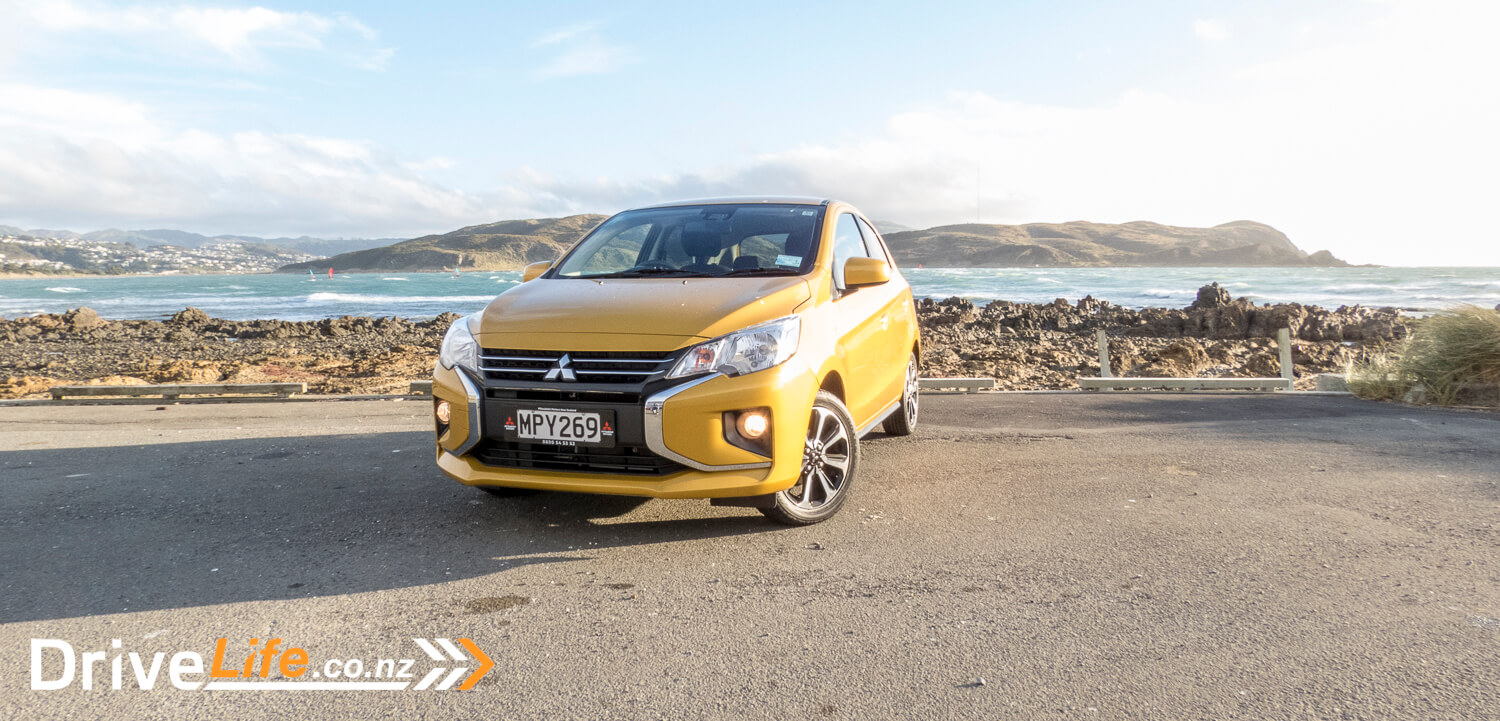
15-inch alloy wheels come standard, plus there’s a new rear bumper with integrated reflectors and imitation diffuser on the lower part.
All the changes serve the Mirage well. I also like that you can get the Mirage a range of shouty colours, and personally, I dig this yellow.
Overall, I’m giving it a thumbs up. Surprising eh?
What’s The Interior Like On A 2020 Mitsubishi Mirage XLS?
For $19,900, you are understandably going to get a car which is pretty basic on the inside.
Getting inside the Mirage, there’s no strong evidence indicating that the car is from the year 2020. It’s the same original design from 2012, from when Mitsubishi released this 6th generation Mirage.

The interior is a sea of hard plastics. The main dashboard is the same largely unstylised design, but is now fitted with a 7’’ inch touchscreen infotainment. The steering wheel is wrapped in one continuous piece of plastic and has a simple control layout.
Although it’s basic and a bit dated, all the climate controls and other switchgear are clearly legible and simple to use. Anyone could jump in the Mirage and figure out how to operate it.
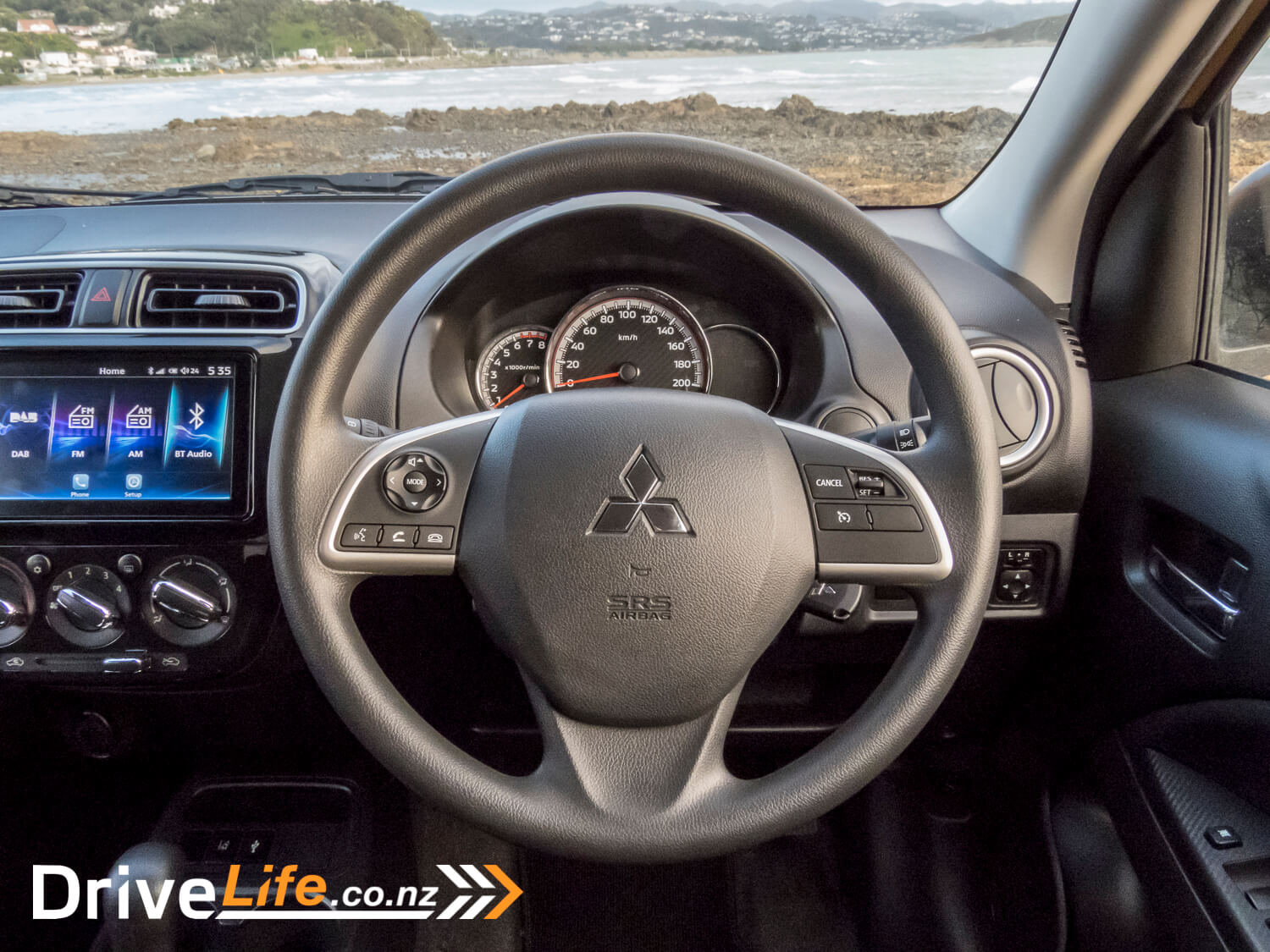
Mitsubishi has also attempted to spice the interior up with some silver accents around the vents, plus a piano black garnish around the gearstick. The Mirage also has faux carbon-fibre trims on the door panels, plus a carbon fibre style pattern behind the instrument cluster.
On that subject, is there a consumer survey somewhere which is telling car manufacturers that faux carbon-fibre trims are a good idea? If there is, I’d like to burn it.
In the case of the Mirage, the fake carbon has a matte finish and blends with the door card plastics. So personally, I’ll give the Mirage a pass.
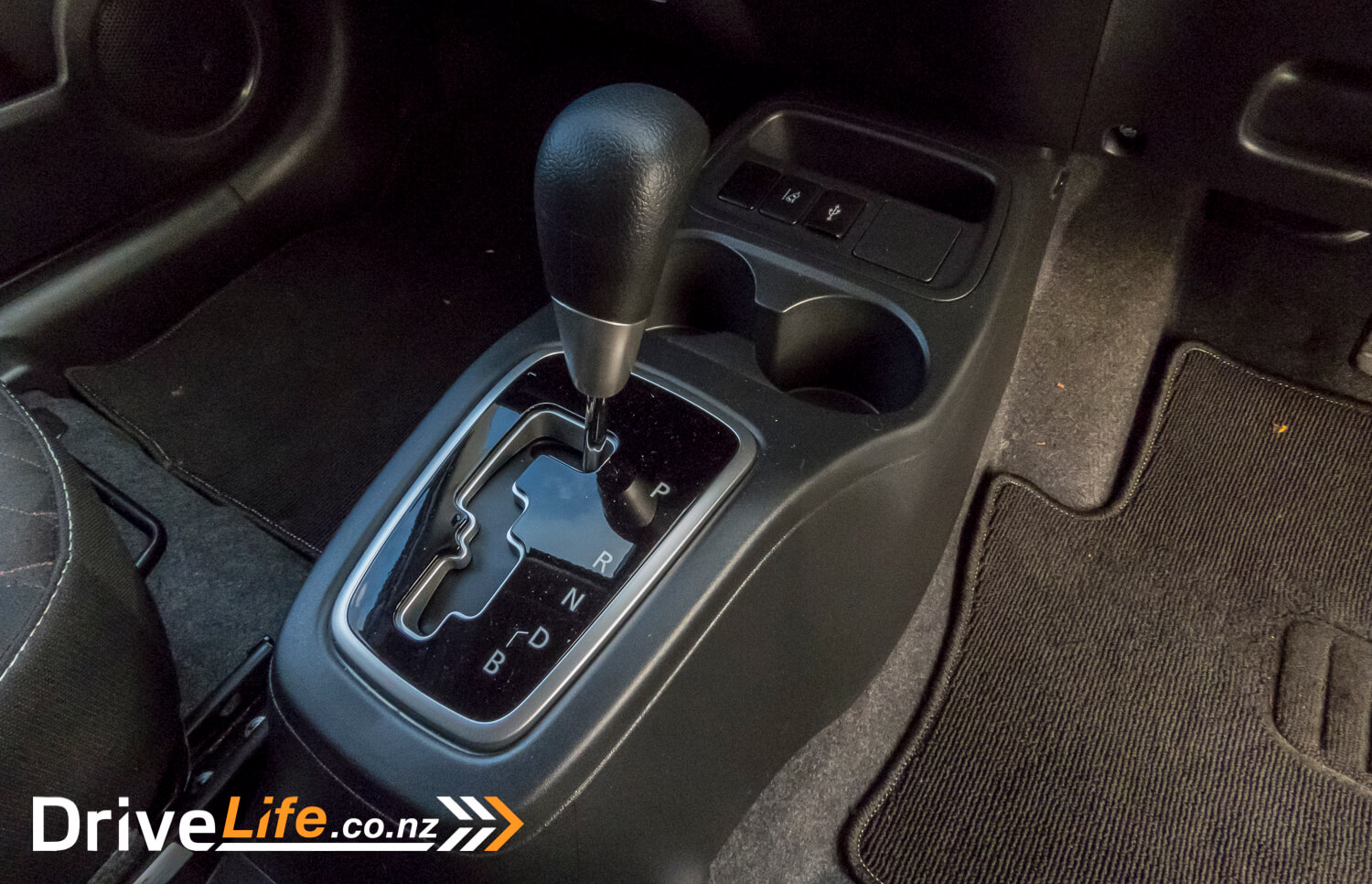
The Mirage’s 7’’ inch infotainment allows for Apple CarPlay and Android Auto, connected via the single USB port near the cupholder area. Most manufacturers will rely on you using a phone mirroring service like Apple CarPlay and Android Auto, so they needn’t source anything too costly and complex.
The infotainment is otherwise a basic unit. Its resolution and responsiveness aren’t anything to write-home about, but it does the job without any party tricks.

The front seats are on the firm side, yet offer decent back support. Although, the seat base is slightly short and under thigh support is lacking. I never found them uncomfortable on my commute, but if you have longer legs, you mightn’t enjoy the journeys further afield.
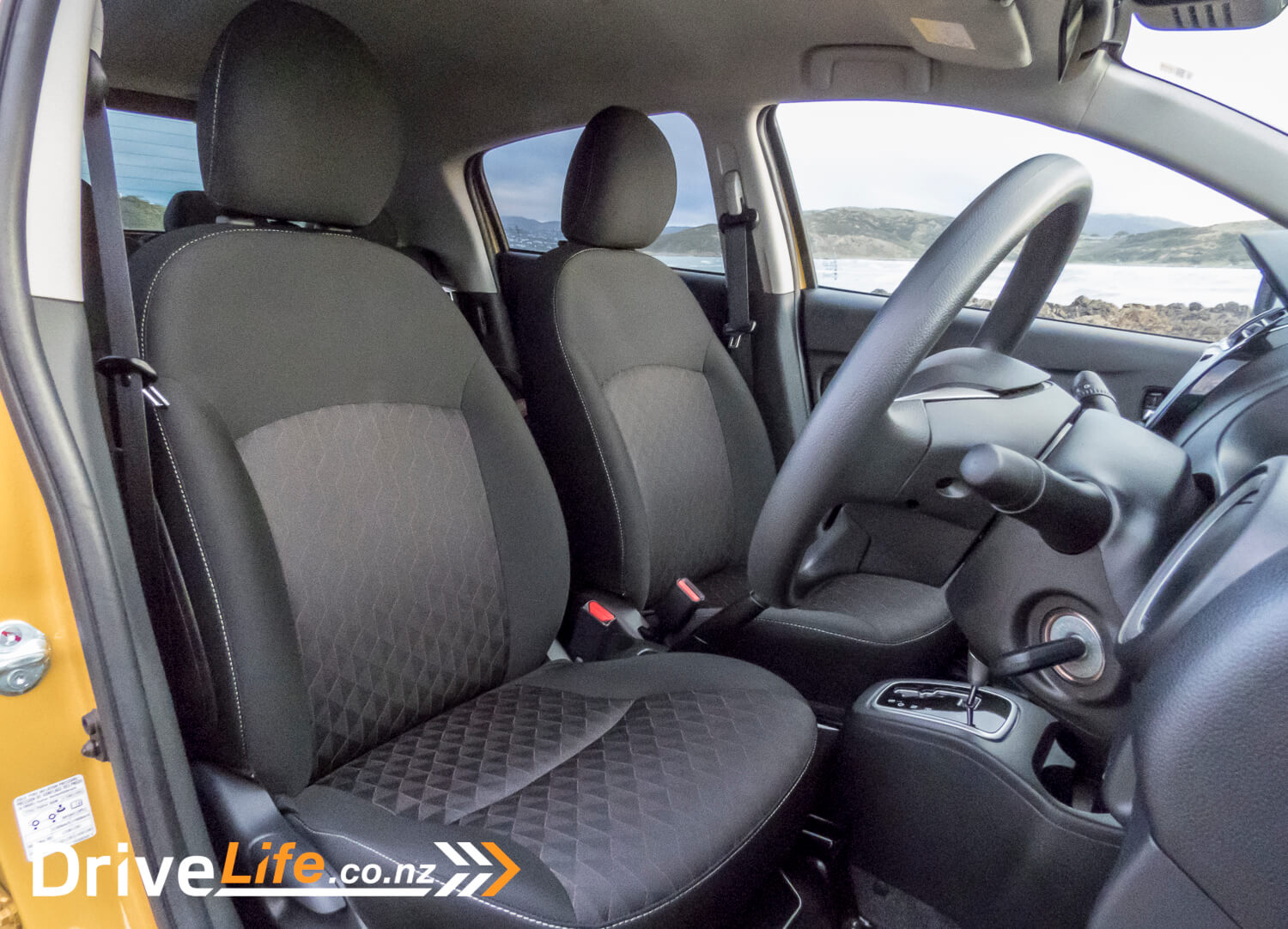
The back seats are where the 2020 Mirage makes the biggest improvement. The rear seats actually use different upholstery and have some contouring to it! For those unaware, earlier models of the same generation used a single fabric upholstery across the rear seats, which could only be best described as looking like a crap futon.
On a more serious note, the rear seats of any small car aren’t exactly prime real estate. However, the Mirage does offer reasonable rear leg-room for its small size. It certainly wasn’t too bad for my 5’11 self.
On the other hand, my head did touch the roof in the rear, despite the low seat base. This was manageable with a somewhat unnatural slouch, which means I wouldn’t recommend sitting in the back if you’re taller than me or a chiropractor by profession.
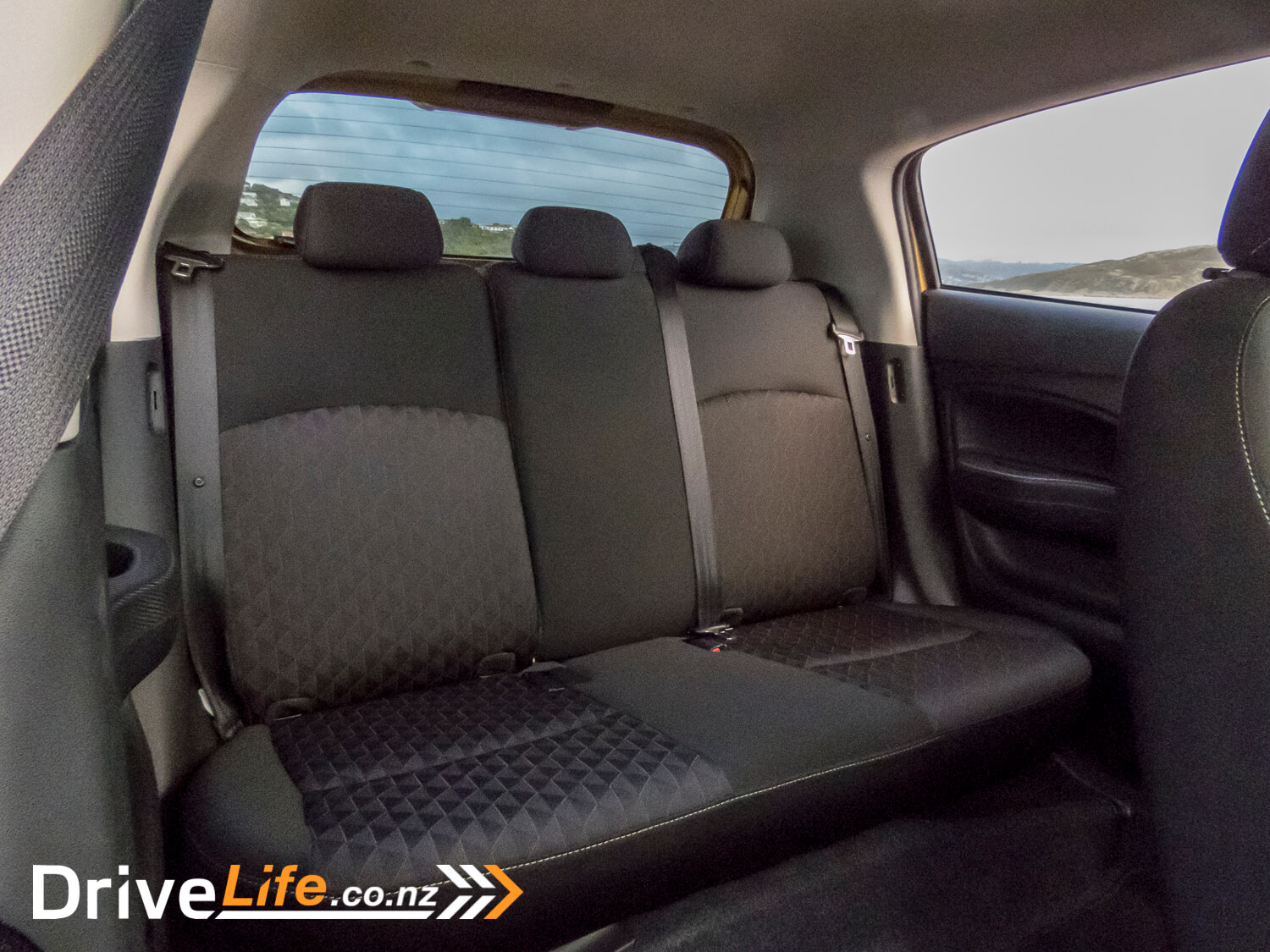
The Mirage also has a reasonably sized boot. It’s not quite as good as it’s closest competition, but is only narrowly beaten in most cases. The capacities are 235 litres rear seats up, 599 litres with them down. Mitsubishi also has the common sense to give you a proper spare tyre, albeit a space saver.
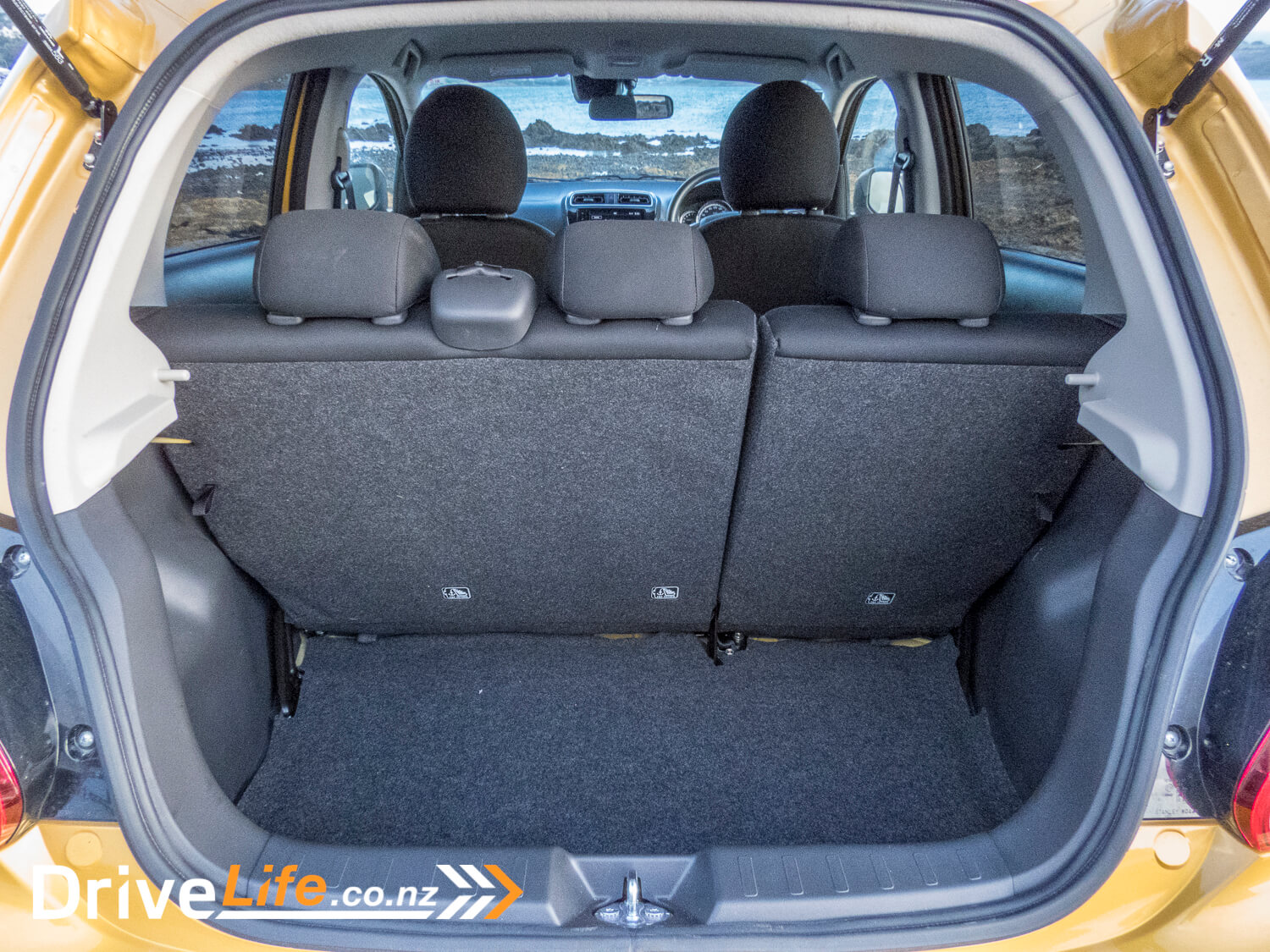
The boot of the Mirage is also where you might spot perhaps one of the automotive world’s cheapest carpet floor liners. I’m not going to pretend to act surprised when finding that a cheap car has cheap bits, but this carpet only just manages to cover the entire floor. It doesn’t even fit the boot floor all that well.
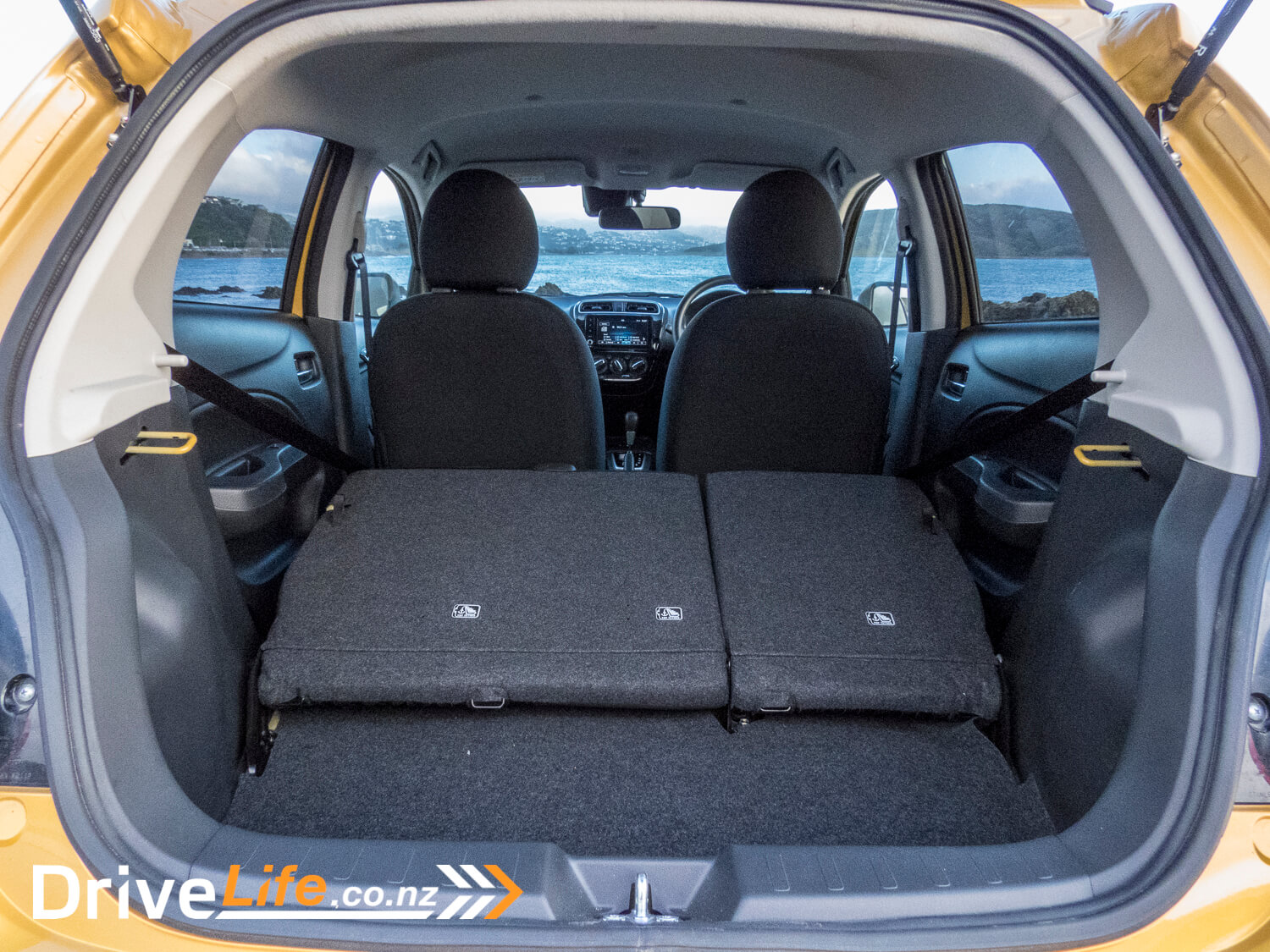
Overall, the Mirage retains it’s simple interior with some touch-ups for 2020. However, the Mirage’s simple layout had a familiarity which I appreciated. It’s what you’d expect of a car, relative to some new vehicles which are arguably just smartphones on wheels. I suspect an older crowd will probably like it for a similar reason. The difficult part is that you’re paying for a new car with a basic interior which was designed in 2012 and honestly still looks like it.
Above all, nothing wowed me, but I can’t complain for the price.
What Does The 2020 Mitsubishi Mirage XLS Drive Like?
If you’re expecting the driving component to deliver any surprises, then you’re due a reality check. This a super-mini after all.
In other words, the Mirage is not quick. It’s quite normal of vehicles in this class to think that more petrol is being converted to noise than forward momentum. The 1.2 litre MIVEC produces 58kW of power and 102Nm of torque. Being naturally aspirated, the power curve is consistent and predictable for the small amount of power that’s actually there.
Simply put, the powertrain does the job. Exactly that. So, no frills, no fuss? Not exactly.
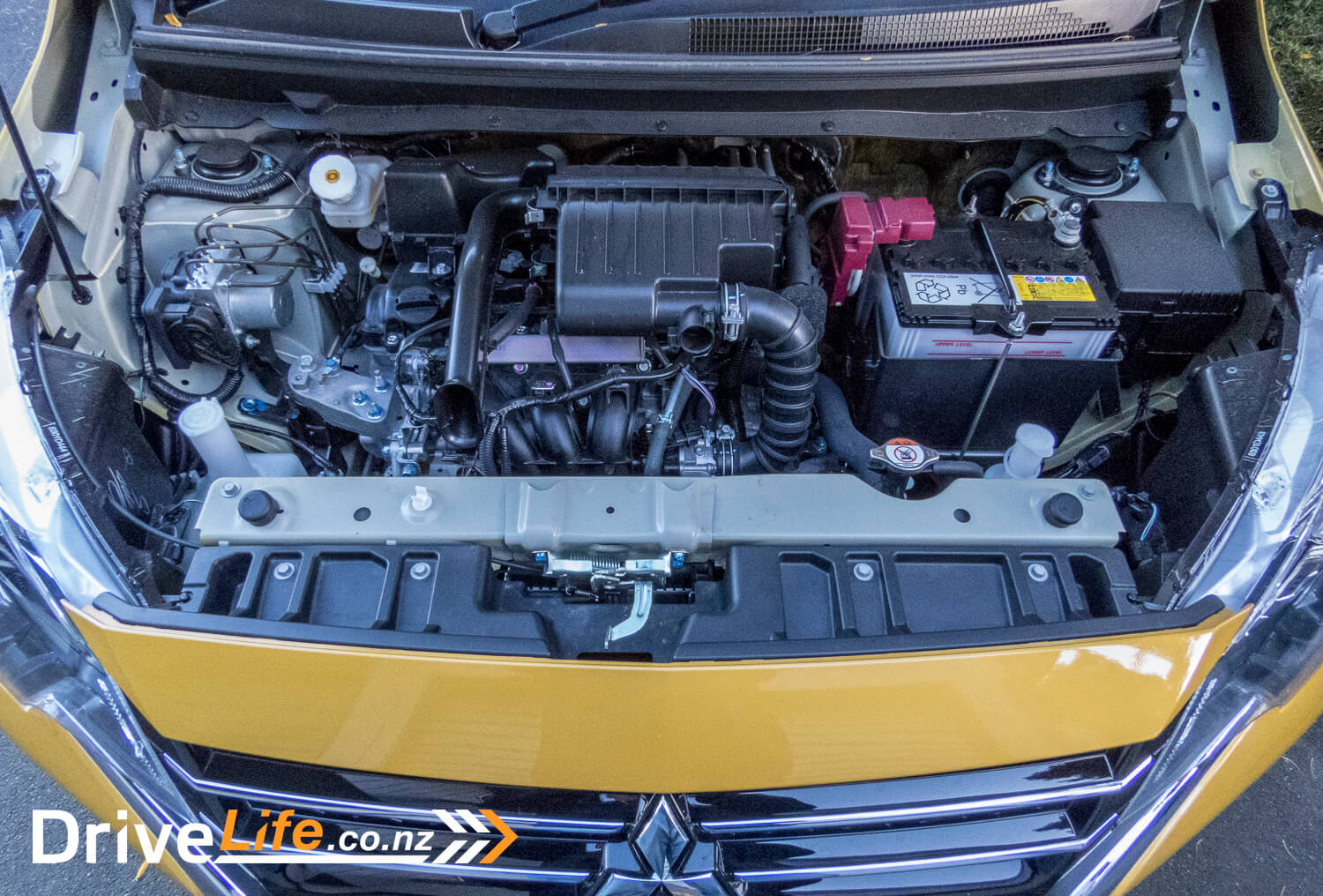
My biggest gripe with the MIVEC engine is with its overall refinement. At times, the vehicle would noticeably shake when sitting at idle, suggesting the engine could do with some better balancing. When under load, the engine also makes a noise which is more akin to how a van would sound.
You’ll also be reminded of that noise regularly if you’re a motorway driver, as there’s not a heap of sound deadening in the vehicle.
A used Mazda 2 of the last decade, which would go for around half the price on the used market is much more refined, and is also quieter and quicker too (My Mum has one, and Drivelife’s Kate Alvrez does too).
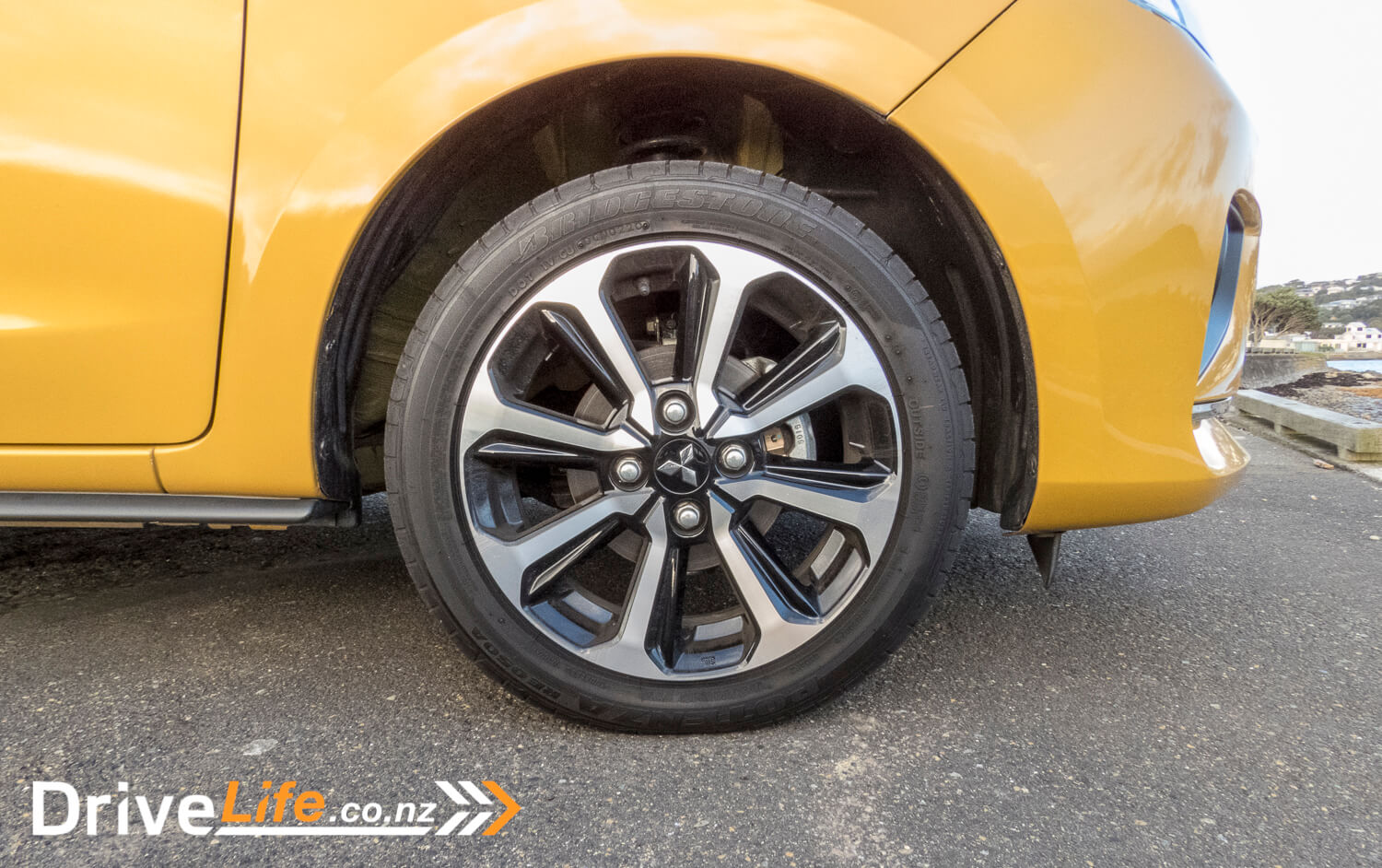
All this said, Mitsubishi got all the other basics correct. The brakes have the feel and stopping power you’d expect, even though there’s drum brakes on the rear. The steering is light, but not flimsy. Being a small vehicle, you get a tight turning circle too. The ride is also okay, if slightly on the firm side. All of this means that the Mirage is best suited for city roads.
The benefit of a small engine is also frugality. We achieved an average of 6.0L/100kms during our time with the Mirage, on a mix of mostly motorway and urban diving. Of course, it is a bit away from Mitsubishi’s own estimate of 5.0L/100kms.
So far, we know that the Mirage does the job, but doing the job simply isn’t enough these days. Why would I buy a new Mirage?
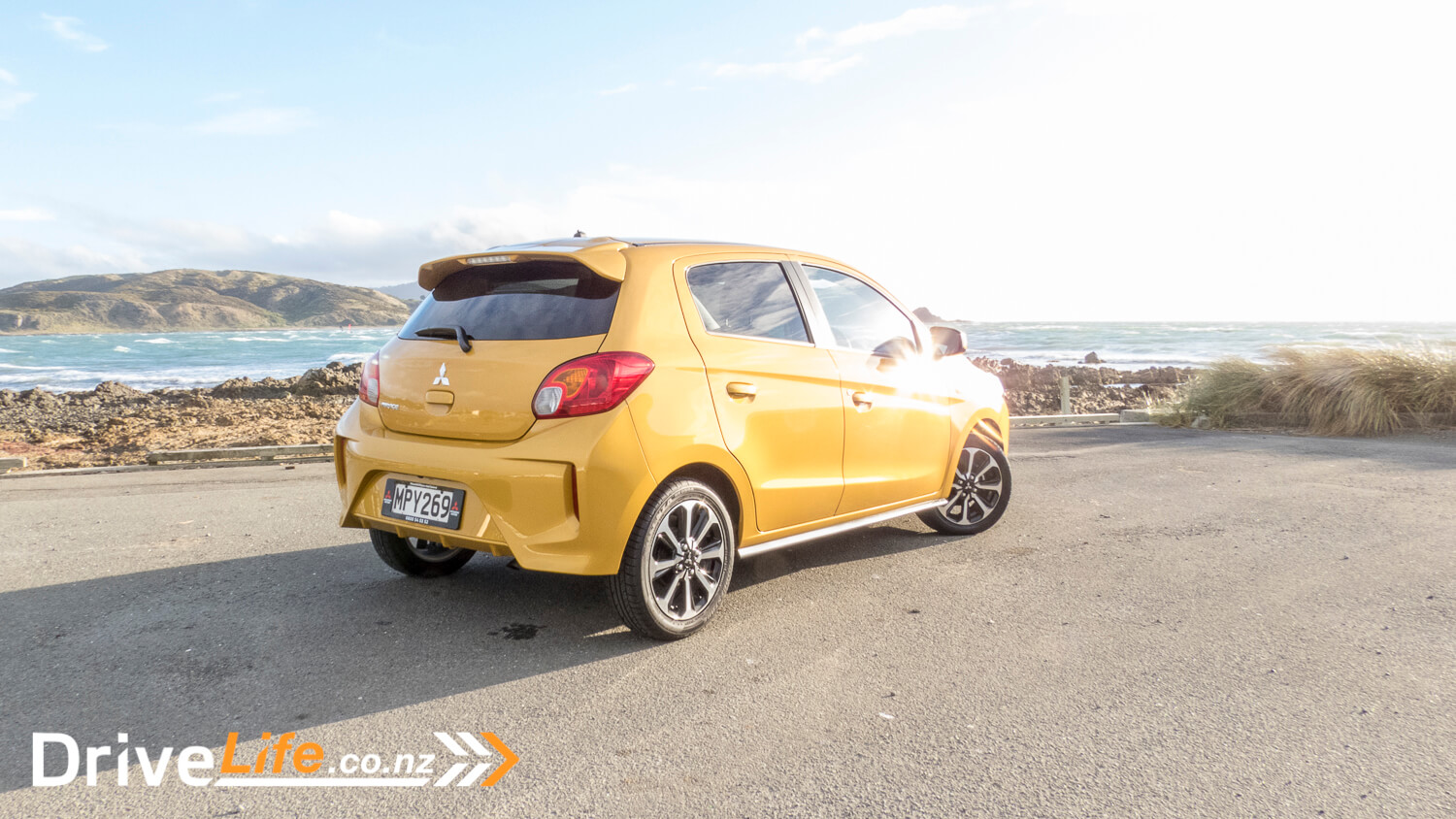
Perhaps one of the stronger selling points is that the Mirage comes with a 5-star ANCAP safety rating. This means the Mirage comes with the essential safety kit. You get lane departure warning, forward collision mitigation, hill start assist, and a reversing camera.
Safety ratings do change over time, so having a vehicle that meets the current standards should be a fairly big deal in swaying the decision to go for a new car versus a used one.
Although I do question the usefulness of some of these safety features, as sometimes these features just seem like a compliance measure by the manufacturer rather than adding anything credible to occupant safety.
In the Mirage’s case, my gripe is with the lane departure warning. When switched on, it makes a noise which can hardly be heard over music that’s anything higher than a medium volume. If you don’t hear it, the only visual aid is the small dimly-lit icon on the instrument cluster which flashes when you depart the lane. It’s easily ignored, and forgotten.
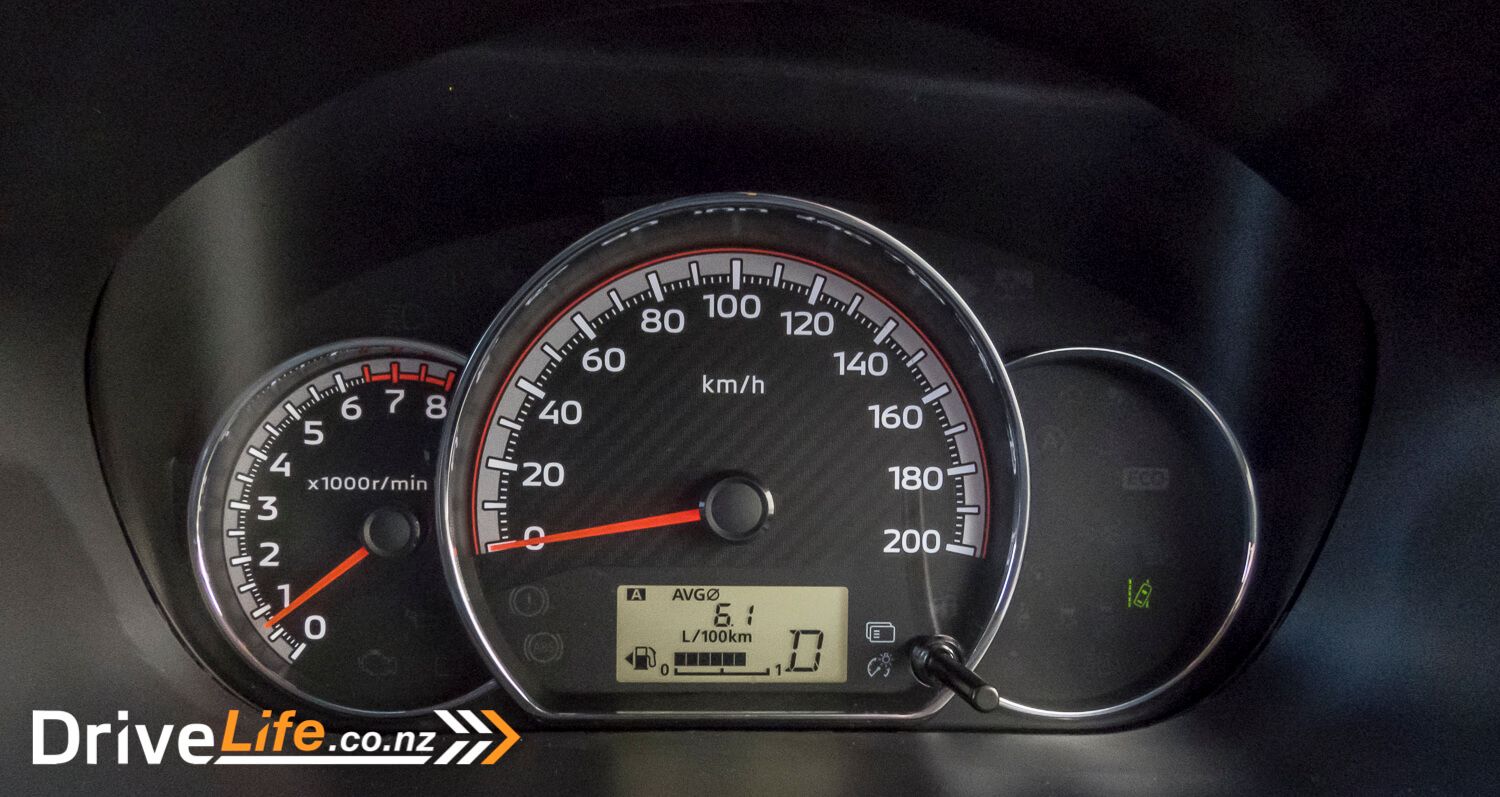
At this point, you might get the impression that there’s not much going for the wee Mirage. However, I’ve saved the best bit till last.
This best bit isn’t specifically related to the car. Instead, it’s Mitsubishi’s Diamond Advantage Warranty, which is offered across the majority of their new vehicle range. The Diamond Advantage Warranty gives you a 10 year/160,000km powertrain warranty, which covers the engine and gearbox, plus a 5 year/130,000km bumper-to-bumper warranty, which pretty much captures everything else.
Mitsubishi’s customer service ranking in New Zealand is also fairly solid. In fact, they’re usually jousting with Toyota in some service respects. This means you shouldn’t get too many push-backs with warranty claims if any are made. Mitsubishi’s are generally reliable things anyway.
What’s The Competition For The 2020 Mitsubishi Mirage XLS?
Back in 2015, we reviewed several cars to determine which was the best car sub-$20,000. That list had 15 vehicles on it. 5 years on, there are only three on this table which sit below the $20,000 mark. Here are the closest available competitors to the Mitsubishi Mirage.
| Brand/Model | Engine | Power/Torque kW/Nm | Economy, L/100km (claimed) | Seats | Boot Space, Litres | Price |
| Skoda Fabia | 1.6-litre 4-cylinder | 81/155 | 5.9 | 5 | 310 | $24,990 |
| Hyundai i20 | 1.4-litre 4-cylinder | 74/134 | 6.5 | 5 | 301 | $23,990 |
| Honda Jazz S | 1.3-litre 4-cylinder | 73/119 | 5.1 | 5 | 363 | $22,990 |
| Suzuki Swift GL (Auto) | 1.2-litre 4-cylinder | 66/120 | 4.8 | 5 | 242 | $20,990 |
| Kia Picanto LX | 1.25-litre 4-cylinder Petrol Engine | 62/122 | 5.8 | 5 | 255 | $20,990 |
| Mitsubishi Mirage | 1.2-litre 3-cylinder | 58/102 | 5.0 | 5 | 235 | $19,990 |
| MG MG3 | 1.5-litre 4-cylinder | 82/150 | 6.7 | 5 | 307 | $17,990 |
| Suzuki Celerio | 1-litre 3-cylinder | 50/90 | 4.8 | 5 | 254 | $17,900 |
What’s The Pros And Cons For The 2020 Mitsubishi Mirage XLS?
Pros
- Refreshed styling and shouty colours
- Simple, approachable interior
- Decent boot
- Safety rating
- Great Warranty
- Value
Cons
- Cheap, dated interior
- Rear passenger space
- Engine refinement
- Performance
- Few toys apart from the essentials
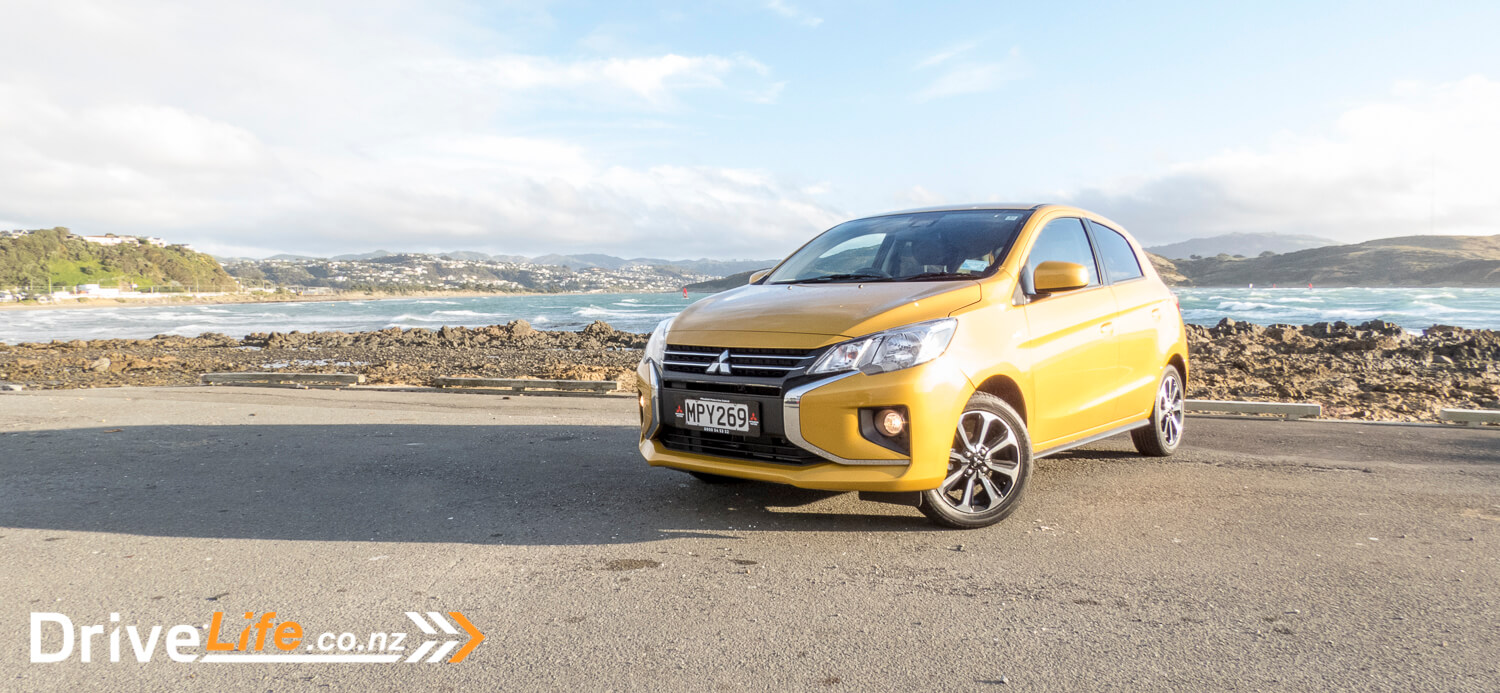
2020 Mitsubishi Mirage XLS – Specifications
| Vehicle Type | 5-door subcompact hatchback |
| Starting Price | $19,990 |
| Price as Tested | $19,990 |
| Engine | 1.2-litre 3-cylinder petrol engine |
| Power, Torque (kW/Nm) | 58/102 |
| Transmission | Continuously Variable Transmission (CVT Automatic) |
| Spare Wheel | Spacesaver |
| Kerb Weight, Kg | 895 |
| Length x Width x Height (mm) | 3845 x 1665 x 1510 |
| Cargo Capacity, litres | 235/599 |
| Fuel tank Capacity litres | 35 |
| Fuel Economy L/100km | Advertised Spec – 5.0 Real World Test – 6.0 |
| Towing Capacity Kg, unbraked/braked | You’re not serious, are you? (NA) |


